There is a lot of speculation in the surf society today about the pros and cons of surfing wooden surfboards, compared with the more popular and standard foam boards. I believe that, where there is any stigma about wooden surfboards, it tends to come from people who have never ridden one. Hence, they don’t feel comfortable with what they don’t know. They may think: “Yes they look really sick”, but “surely the performance and ability are nowhere near that of a standard foam board?” They could hardly be more wrong! The methods used today in wooden surfboard shaping and manufacturing have gone to the next level.
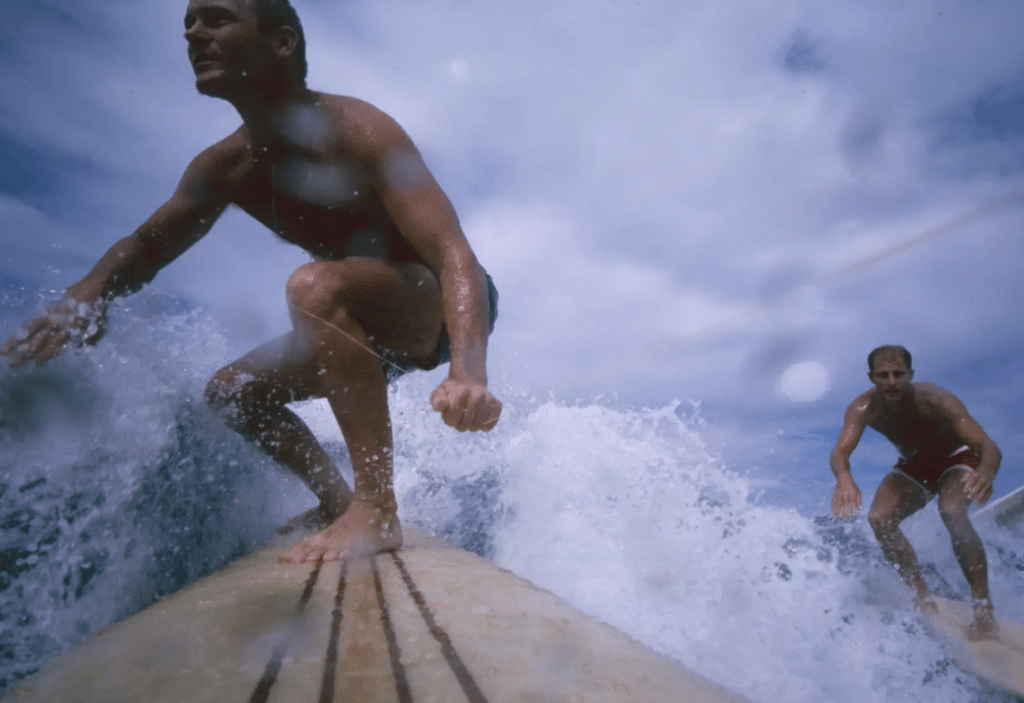
Surfers in Oahu, 1963.
George Silk/The LIFE Picture Collection/Getty Images
Perhaps detractors assume that, as wooden boards were so popular back in the early 1930s, 40s and 50s, they must now represent dead surfing technology. Certainly, that technology has been superseded. But it has been replaced by a NextGen technology in wooden boards that rivals or outperforms anything on offer from the (also outdated) technology of foam boards.
Stunt surfers in Hawaii, 1960

Keystone/Getty Images
Originally made of heavy hardwoods like cedar and redwood, these boards weighed anything from 50 -70kg. Sure, with the turnability and performance of a river boat, this is not what you want out of your board. Everyone wants the lightest, most high-performing and affordable surfboards on which to fine-tune their skills throughout their surfing career. Yet too many people fail to think about – or choose to ignore – the fact that modern-day foam surfboards are extremely bad for the environment. Including all the chemicals used to produce them, they have a very heavy Carbon footprint. The shaping process of foam surfboards generates high volumes of polyurethane foam particles which are regularly deposited in landfill, leaching toxic chemicals and micro-particles into the land before, all too often, making their way into watercourses to reach the ocean and its wildlife.
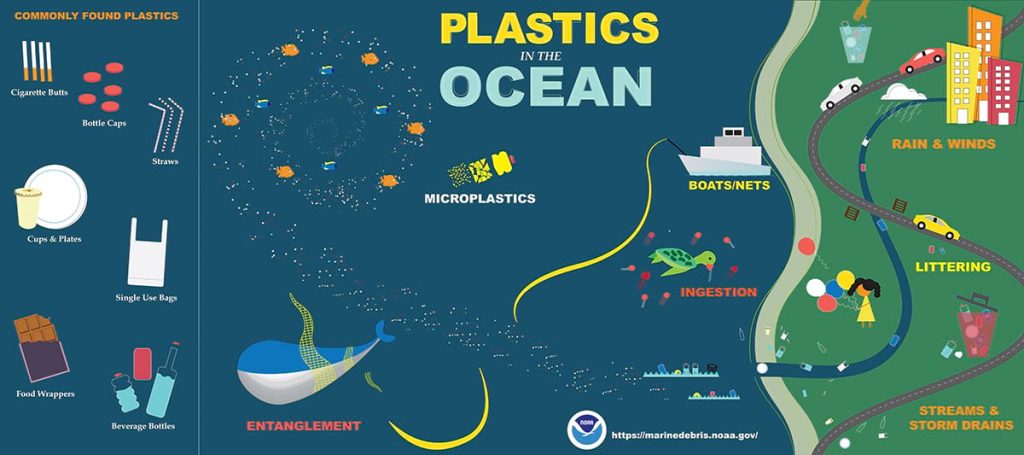
Photo by oceanservice.noaa.gov
The fragile ocean we all know and love is additionally challenged when we ride these toxic boards, especially when they are snapped or badly damaged. Where do these pieces end up? I think we all know: inside the digestive systems of marine life or lodged in coral, trashing its structure through wave action. I have yet to see a surfer searching to retrieve pieces of their board adrift in the ocean; no doubt some do try, but it’s usually discarded as a lost cause.
Please check this link from Surf Science about the environmental impact that surfboards have on the environment.
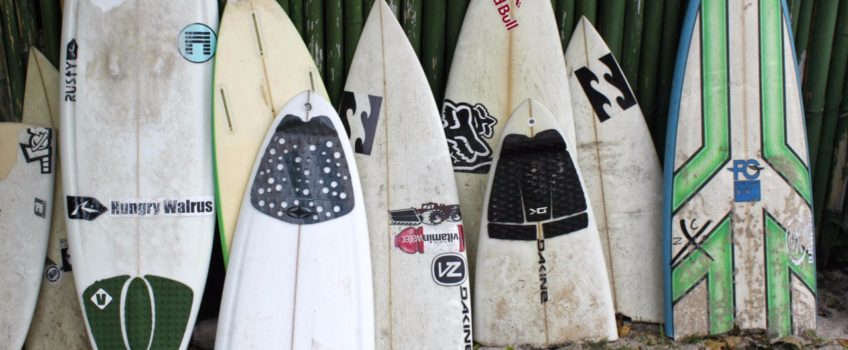
Photo from laybacktravel.com
The average intermediate to advanced surfer would probably have three or four surfboards and each would last anywhere from three months to a year or two. At the one-to-two-year stage these boards would be really battered and bruised and will be on the way to being traded or sold for a new replacement. So, in the lifespan of a surfer, this can amount to quite a cost – in terms of environmental pollution as well as expenditure.
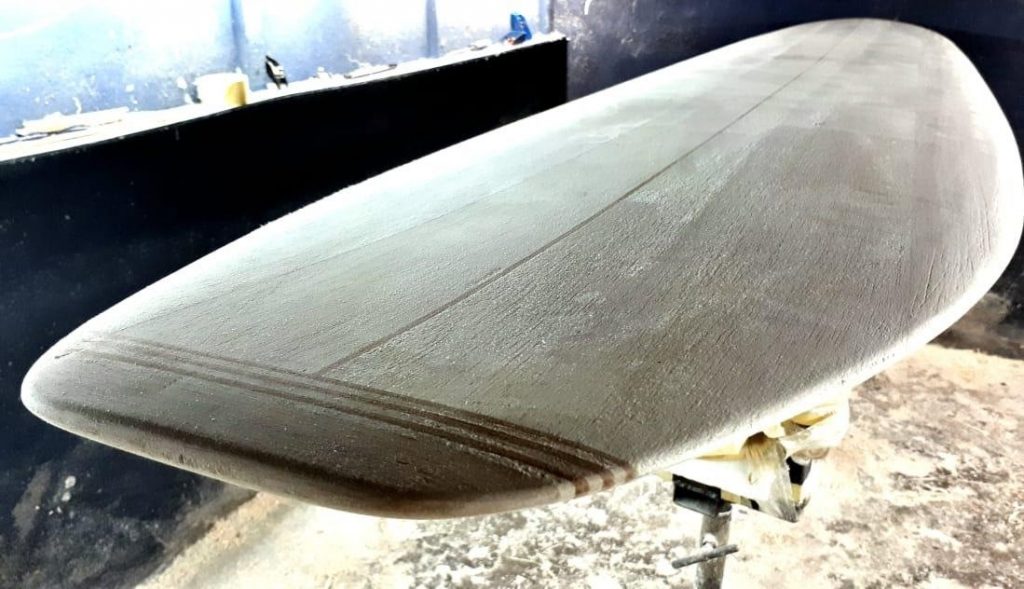
Kayu Surfboards
When it comes to surfing wooden boards, KAYU’S hollow-chambered balsa wood boards and blanks are hand made with all the newest and most advanced shaping techniques and styles. KAYU surfboards are sustainable, farmed in Indonesia and crafted to the highest quality and standards in Bali. The balsa tree is one of the fastest growing species of tree, even more so than Bamboo – it is a common misconception that bamboo is the fastest growing species. KAYU surfboards will easily last a surfer for 10+ years, provided that proper care is maintained. KAYU surfboards even provide a lifetime guarantee against snapping, on ALL boards purchased.
KAYU surfboards will easily last a surfer for 10+ years, provided that proper care is maintained. KAYU surfboards even provide a lifetime guarantee against snapping, on ALL boards purchased.
So, going back to the issue I opened with, KAYU balsa wood boards are incredibly lightweight, fast, high-performance, beautiful and sustainable. They are also environmentally sound, a great investment, and awesome in the water. To the detractors of wooden boards: can you please tell me of just one foam board that even begins to compete with that list of attributes?
With a full signature model series of boards ranging from the “Mini Fish” to shortboards, funboards, mini-Malibu’s, longboards and SUPs, each board has its own grace and certified mark in the water.
Along with the finished product KAYU also sells balsa wooden blanks, built ready to shape with ease whether for the novice or for the seasoned shaper. KAYU blanks are 60% complete, fully marked out for an easy step by step approach to shaping your own dream wooden board. There is a certain satisfaction that comes with shaping your own board, completely tailored to your individual specification and vision, then seeing the finished product you have created and getting it in the ocean.
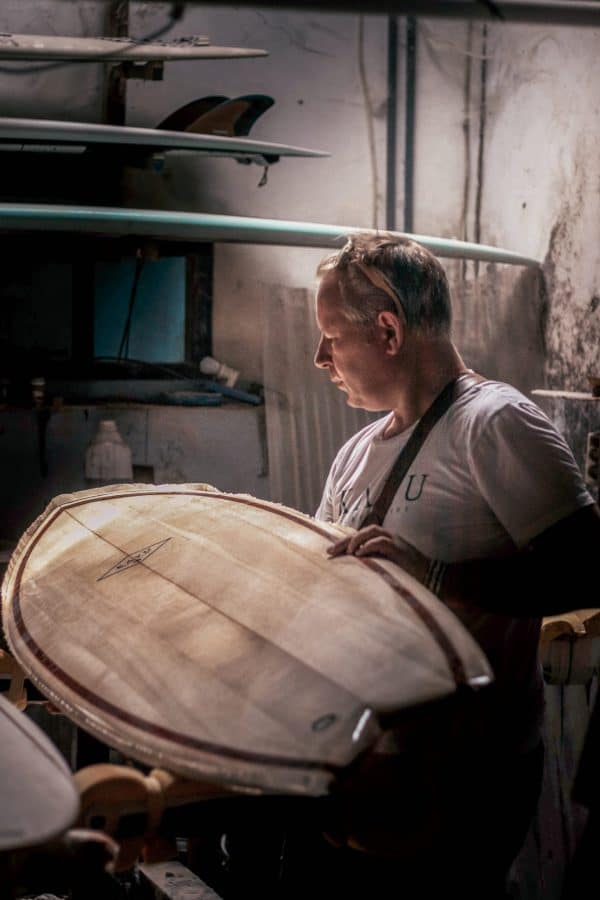
Kayu Surfboards,
